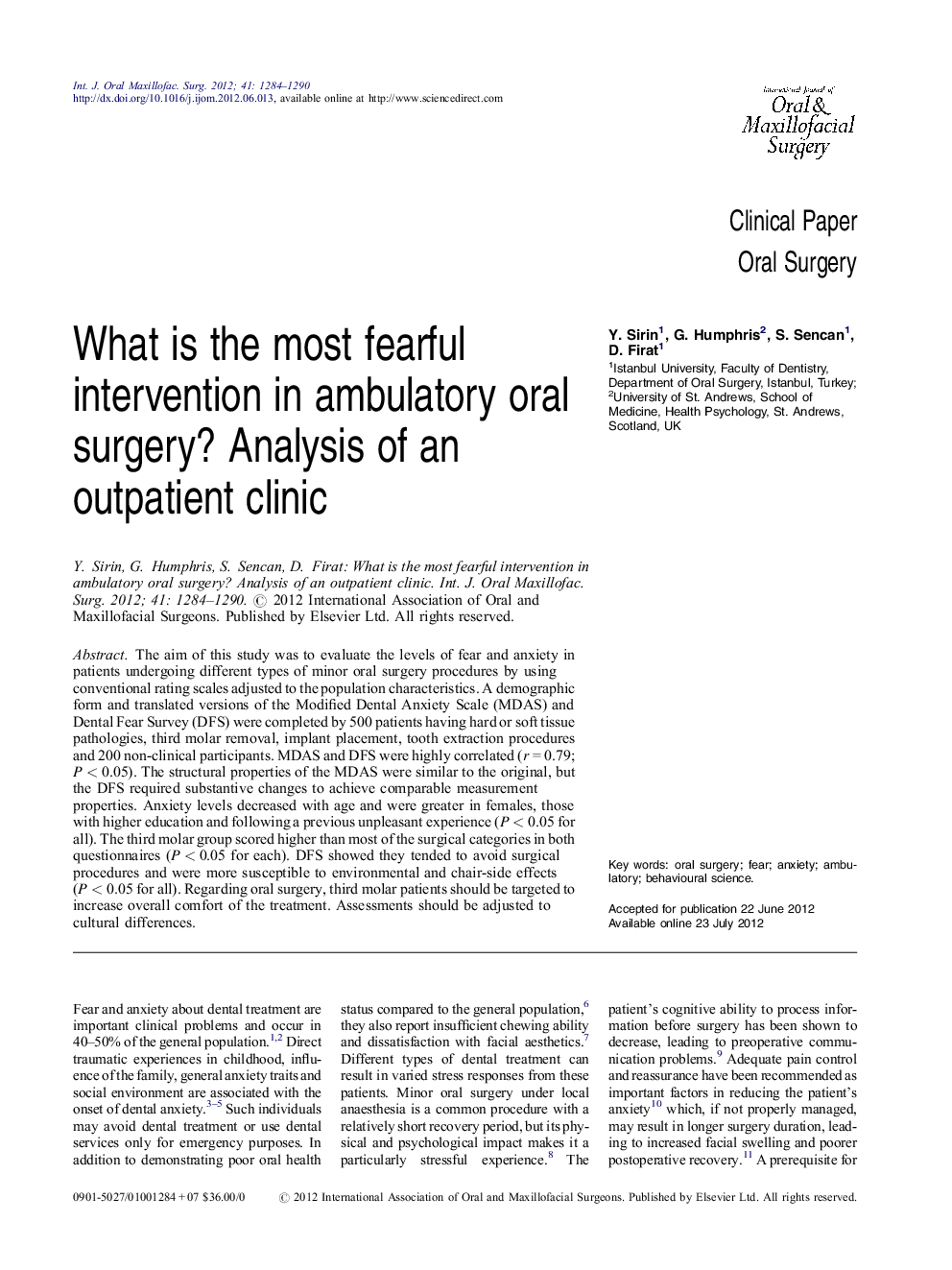| Article ID | Journal | Published Year | Pages | File Type |
|---|---|---|---|---|
| 3133040 | International Journal of Oral and Maxillofacial Surgery | 2012 | 7 Pages |
The aim of this study was to evaluate the levels of fear and anxiety in patients undergoing different types of minor oral surgery procedures by using conventional rating scales adjusted to the population characteristics. A demographic form and translated versions of the Modified Dental Anxiety Scale (MDAS) and Dental Fear Survey (DFS) were completed by 500 patients having hard or soft tissue pathologies, third molar removal, implant placement, tooth extraction procedures and 200 non-clinical participants. MDAS and DFS were highly correlated (r = 0.79; P < 0.05). The structural properties of the MDAS were similar to the original, but the DFS required substantive changes to achieve comparable measurement properties. Anxiety levels decreased with age and were greater in females, those with higher education and following a previous unpleasant experience (P < 0.05 for all). The third molar group scored higher than most of the surgical categories in both questionnaires (P < 0.05 for each). DFS showed they tended to avoid surgical procedures and were more susceptible to environmental and chair-side effects (P < 0.05 for all). Regarding oral surgery, third molar patients should be targeted to increase overall comfort of the treatment. Assessments should be adjusted to cultural differences.
